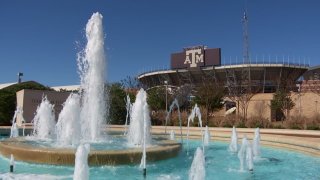
The creation of the Texas A&M Space Institute and construction of a Texas A&M facility next to NASA's Johnson Space Center in Houston was approved by the Board of Regents of The Texas A&M University System on Wednesday.
“The Texas A&M Space Institute will make sure the state expands its role as a leader in the new space economy,” John Sharp, chancellor of the Texas A&M System, said. “No university is better equipped for aeronautics and space projects than Texas A&M.”
The board’s approval follows a $350 million investment from the Texas Legislature, $200 million of which will be allocated to Texas A&M for the construction of the facility.
Texas Rep. Greg Bonnen (R-Friendswood) authored House Bill 3447 earlier this year which creates Texas Space Commission, the Space Exploration and Aeronautics Research Fund, and the Texas Aerospace Research and Space Economy Consortium.
Get DFW local news, weather forecasts and entertainment stories to your inbox. Sign up for NBC DFW newsletters.
The focus is to keep Texas as a leader in the field of space exploration. The new facility and its scientists will support mission training, aeronautics research, advanced robotics and work on lunar and Martian exploration.
Texas A&M’s new facility will use the universities expertise and resources to make new discoveries, technological developments, health advances and workforce growth. It will depend on partnerships with public and private entities in a variety of sectors from across the country.
The university has a history with space explorations as a Space Grant university. Their faculty includes four astronauts and scientists and engineers who have participated in all NASA rover missions to Mars, with two scientists active on NASA’s Perseverance Rover Team.
Texas News
News from around the state of Texas.
Currently, Texas A&M’s students, faculty and researchers are working on more than 300 space-related projects. Over the last five years, the school has received over $25 million every year in funding from NASA and other government agencies, as well as grants from the commercial space industry.



